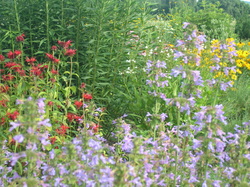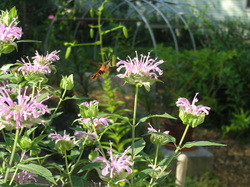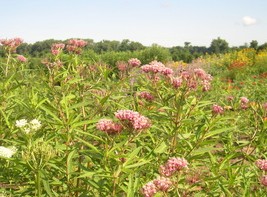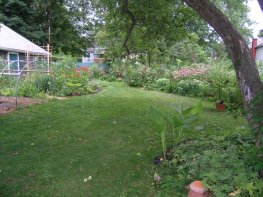
Provide pithy and hollow-stem nesting for native bees. Tunnel-nesting bees are great pollinators of early-blooming fruits and will lay their eggs in hollow tubes such as bamboo, paper tubes and drilled holes, and the pithy stems of staghorn sumac, raspberry and elderberry.
Reduce lawn area and plant wildflowers instead. Reducing lawns by planting a native wildflower border at least three feet wide around them creates more habitat for pollinators. Also, raise your mower height to 4 inches and overseed with clover and other bee-attracting flowering plants.
Connect with neighbors’ habitats. Connectivity of habitat is good for all wildlife, including pollinators. They can find larger areas to mate, lay eggs and visit flowers you plant for them. Consider joining with your neighbors to plant along your property lines.
Join a Pollinator Protection group. Organizations that have stepped up to face this issue include the Pollinator Partnership, the Xerces Society of Invertebrate Conservation, Friends of the Earth, and the U.S. Fish & Wildlife Service.
Continue reading “Tips for Pollinator Proliferation” »



